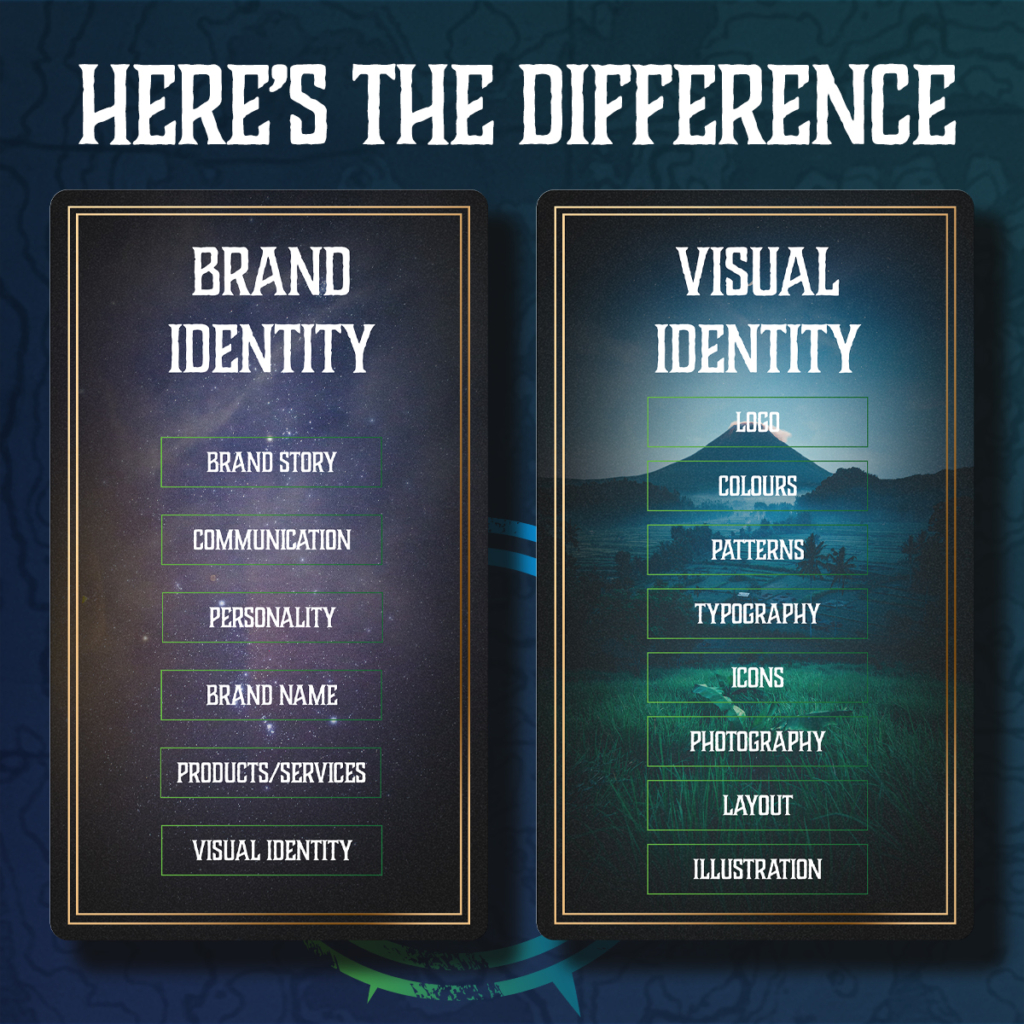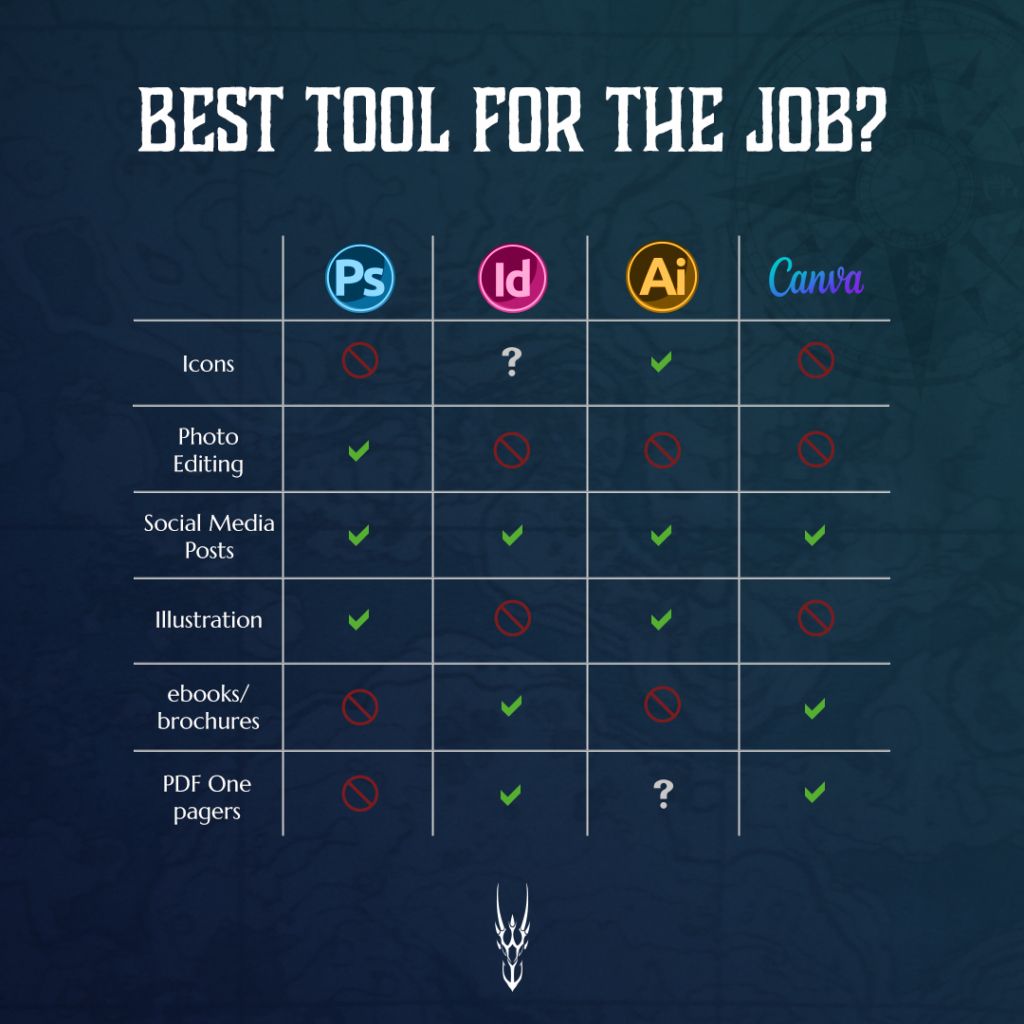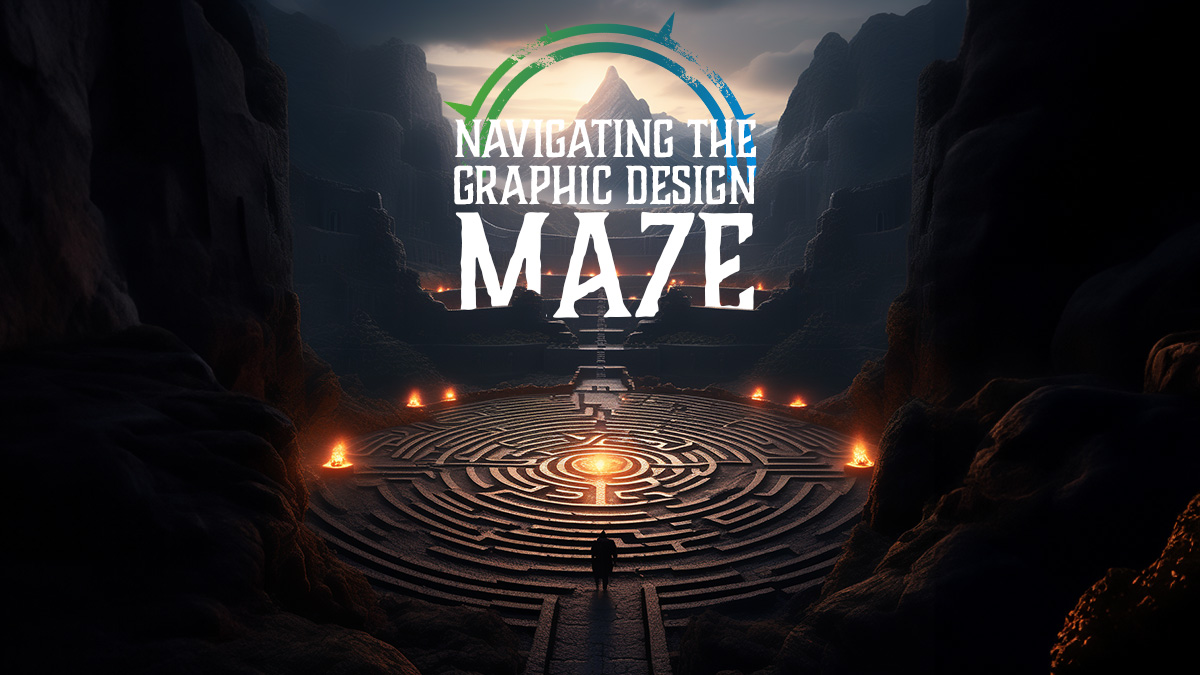First impressions matter. We make hundreds of tiny decisions every day based on initial thoughts and instincts. So how your brand looks is vital. The problem is, that navigating graphic design for small business is tough.
It’s like being lost in a colossal maze.
The tight confines of a maze can be disorienting if you don’t keep your bearings. With so many possible paths, confusion is always just around the corner. Will you find the correct route, or hit another dead end? Will you wander aimlessly as you continually take the wrong turn?
Familiar?
That’s how a lot of small business owners feel when trying to get great graphic design for their brand. Your brand is a powerful storytelling tool and can show a unique identity if done well. Graphic design is the face of this; a unique visual identity has the power to establish credibility, create connection and differentiate you.
With so much riding on it, there’s no shame in feeling lost or paralysed by indecision.
How would you feel if you were facing the same maze – but with a map?
This guide aims to be that map, breaking down common design challenges and providing actionable steps to guide you from confusion to clarity in the graphic design maze.
The Importance of Graphic Design for Small Business
I’d be surprised if you didn’t have at least a little idea of this. But it’s likely deeper than you think – and the first step to doing something well is understanding it.
There are many reasons why graphic design is so vital for small businesses. You can likely think of a few already, so let’s start with the obvious one – establishing a visual identity for your brand.
It’s also where the first point of confusion arises.
People often confuse the visual identity with the brand identity. They’re not interchangeable. In fact, it’s vital to understand what they are to use them both effectively.

Brand Identity and Visual Identity
Brand identity covers a lot of ground – more than just visuals. It’s the heart and soul of a brand, encompassing everything that makes it what it is. Brand story covers a lot of ground, but the other sections also have vital roles. Communication covers the voice and tone. Personality encompasses the values, vision, mission and more.
The brand identity is everything that gives a brand its unique look and feel.
And this includes the visual identity.
In short, the visual identity is a part of the brand identity.
So establishing a strong visual identity is important because it helps to show the brand identity visually. It uses graphics to put across the message and emotions the brand wants to convey.
There are six criteria a great visual identity should achieve:
- Distinct – is it unique and recognisable?
- Memorable – does it leave a good, lasting impression?
- Flexible – can it be used across many formats?
- Cohesive – is it consistent across all touchpoints?
- Scalable – can it grow as the business does?
- Applicable – is it easy for your designers to apply?
Professionalism and Individuality
Graphic design also helps perform two vital roles in your branding – it communicates your professionalism and differentiates your business.
If you look at something that has been poorly designed, you immediately form an opinion on the business. This is why good graphic design is so important for first impressions – it makes you look professional and trustworthy.
And once you have your client’s attention, it helps you stand out from the competition.
You probably have many competitors – some you don’t even know about. Great graphic design helps potential clients differentiate you, which helps get your unique message across. Looking the same as your competition only confuses your customers, making them less likely to choose your services.
As you can see, there is an important link between brand identity and visual identity – so great graphic design starts before the designers are even involved.
Understanding your Brand – and your Audience
The key to navigating graphic design is first creating the map! This can only be done through understanding – and you want to know what’s going on inside and outside. That means understanding both your brand and your audience.
Defining your Brand Identity
The first step on your journey should be figuring out your brand’s identity. This is what makes your brand unique. That means looking at your mission, values and vision, character, voice and much more. This is the strategy phase and should focus on creating a unique identity that stands out and is purpose-driven
A strong brand identity acts like a compass, guiding your brand in the right direction. Building this early helps you make better design choices that will accurately reflect what you are trying to achieve with the brand.
Identifying your Target Audience
Also crucial to making the right design choices is identifying your target audience. The more you know about them, the easier it becomes to communicate with them visually. For example, if your audience is younger, you’ll want to avoid using washed-out colours and classic typefaces.
Take the time to understand your audience and you’ll come to know what they like and dislike. Armed with this information, your graphic designer can help you connect with them on a deeper level.
Creating Design Briefs
I cannot stress the importance of a good brief. This is also a good time to disprove another misconception about graphic design- that graphic design is art.
It’s not.
Graphic design is actually based on science.
It’s all about the end goal – graphic design is using visuals to communicate specific messages to target groups. It relies on data to be effective.
Sure, it’s certainly both creative and artistic. But the difference between good and great graphic design is the ability to use it to achieve a goal, rather than just ‘looking pretty’.
A strong brief should outline goals, audience and design preferences. Providing this ensures your vision is accurately represented visually.
Design Principles and Elements
Figuring out your plan does wonders for your graphic design. So too, does understanding the basics. That’s why it’s important to have a working knowledge of graphic design principles before you begin.
Understanding basic design principles
Contrast, tone, balance, use of white space and unity are a few of the elements that make up good design. If you are creating your own designs, it’s important to understand these concepts and how they can be used to make aesthetically pleasing designs.
For example, contrast refers to the use of visually different elements to draw the eye across a page and highlight important information. The most basic form of contrast is the use of white or negative space to create balance.
Design principles are far too large a subject to cover in one blog post, but it’s still important to know what you’re looking at.
Basic Design Elements
Alongside the principles of design are the elements, and fundamental building blocks of any design. The most common are colours, shapes, typology and imagery. Using these strategically to create a feeling reflecting the brand message is crucial. Colours are the simplest example here – colours have an emotional component. Red, for example, is associated with passion, excitement and energy. Therefore, it should be used in brands that want to reflect these emotions.
Style guides and brand guidelines are great tools for creating a list of approved elements. This keeps the brand looking consistent while maintaining the image and message it wants to show.
Learning practical tips for applying design principles and elements to your projects makes them more aesthetically appealing. Try to strike a balance between creativity and usability to create both appealing and functional designs.
Software and Tools
Armed with elements and principles, it’s time to start designing. The next question is: with what?
There are loads of software and tools available to help you design. There are pros and cons to each, but the most important tip is to choose the right tool for the job. A cheap tool that is designed for the task is better than an expensive one that isn’t.
When creating designs for your business, it’s important to know which tools are out there and what is best for the job you wish to do. Below is a chart comparing Adobe Photoshop, InDesign, Illustrator and Canva with various basic graphic design tasks.

It’s also important to consider ease-of-use and budget when choosing software and tools. It’s no good buying something that you are uncomfortable with just because it’s industry-standard.
Once you’ve chosen the right tool, make the most of it. Practice, stay up-to-date with functions and features and most crucially, play. Experimenting and testing your creative boundaries is important when creating your own visuals if you want a unique style.
Creating Effective Visuals
This is where a lot of small business owners trip up – especially since the advent of tools like Canva.
Just because it’s easy to create something yourself, doesn’t mean you’re going to be good at it.
But you can be, with practice. Here are a few tips to get you started:
- Design for legibility. Design isn’t just about aesthetics; it’s about conveying information. Think about how large (or small) the final piece will be. If your text and images are too small, people won’t spend the extra effort needed to decipher them. Make it as easy as possible for people to find important information so they can easily understand your message.
- Understand colour, shape and font psychology. Select the correct colours, shapes and fonts that reflect the personality of your brand and resonate with your audience.
- Build a visual hierarchy. Graphic design should guide the viewer, not act against them. Use design principles and elements to guide your viewer’s eye through the material.
Graphic Design for Different Media
Another important consideration that small business owners miss is the type of media they are designing for. It’s not all the same, I’m afraid, and you’ll need to make different considerations for print, web and social media.
Print design trips even professionals up from time to time. There are many additional considerations you need for print, such as resolution, bleed and colour profiles. These are again, complex subjects, but having a good print specialist to hand can help answer some questions.
Web design is also trickier than some give it credit for. Optimise your designs for digital platforms, considering factors like screen resolution and responsive design. It’s also important to think about file sizes as too many large images on a page can slow it down and cause bad user experiences.
Finally, social media design should also be thought about differently. Each platform has different preferred dimensions for images as well as file size considerations. It’s additionally important to maintain a consistent brand presence on social media while creating content that stands out. Clients scroll fast, so your content needs to be eye-catching or appealing in some way.
Working with Designers
Of course, you don’t have to do this all on your own. Working with a dedicated designer can boost your brand’s presence – and your income. Professional graphic designers bring years of experience to the table. They also bring creativity and an outside perspective, which can be a huge boon to your brand.
Like with any part of your brand, it’s important to work with designers who have complementary values. They can create even better work when they align with your brand’s vision. Choosing one can be tough, so take time to look through portfolios and testimonials.
Once you have a preferred designer you’ll get better results if you take a collaborative approach. Clear communication and constructive feedback help ensure final designs align with your vision. Here are a few tips for working with designers.
Conclusion
Navigating graphic design for your small business is a real maze. Among the twists and turns are dead ends and false starts. But by focusing on the above tips, you can make good choices that drive you towards attractive design that works as intended. The most important of these is to take a strategic approach – knowing what your goals are makes it easier to achieve them.
Taking courses and doing further reading also improves your abilities. Like a maze, there are no real shortcuts, but having the right tools and an idea of direction makes it easier.
Finally, you need courage. Your designs won’t be right the first time, but you’ll improve with patience and practice.
The journey from confusion to clarity is ongoing – each step taken brings your brand closer to a compelling and unique visual identity.
Need some help finding a unique visual identity? I’ve got the experience and expertise to help guide you – or do the hard work for you. Click the button below to book a meeting.






